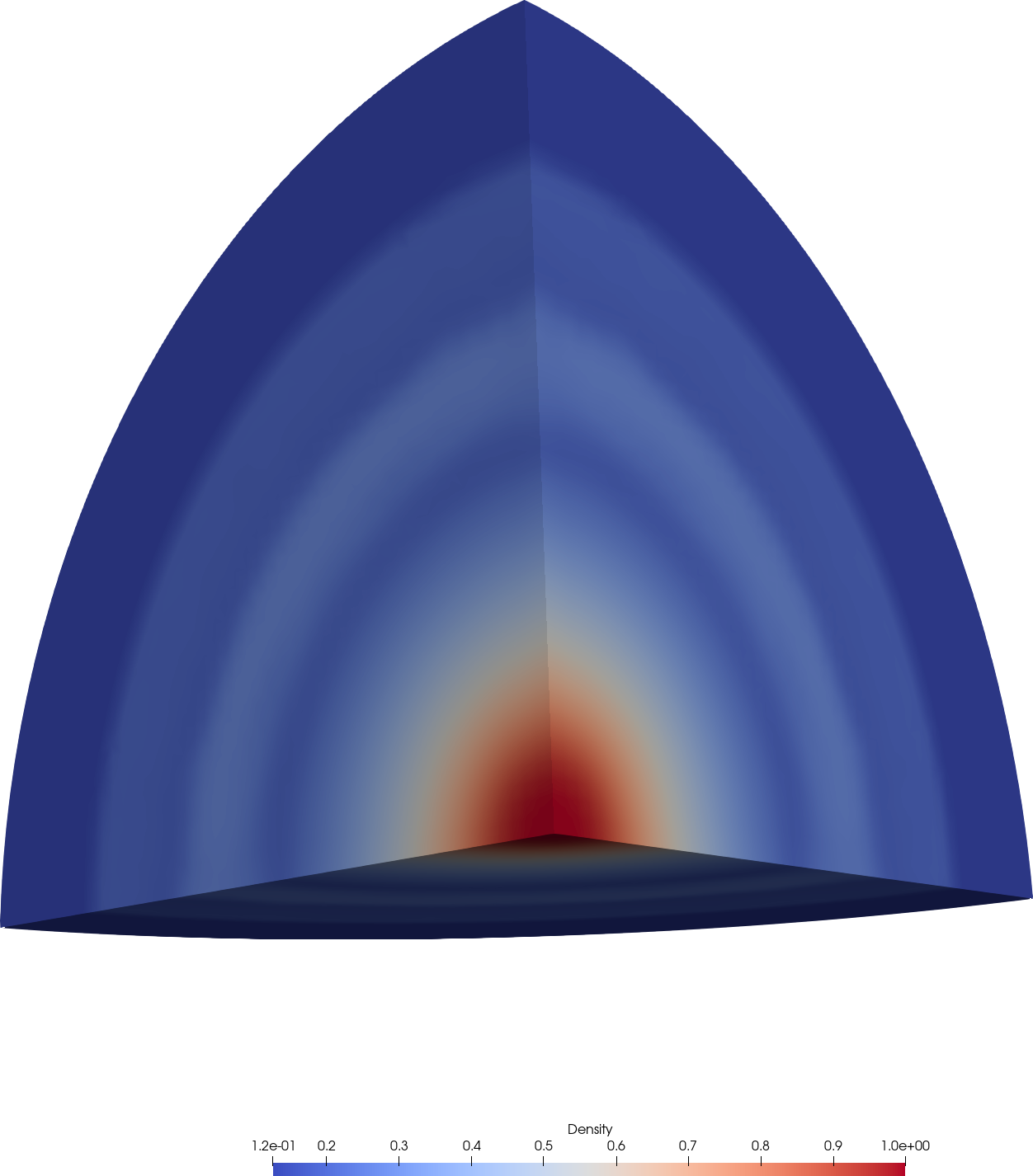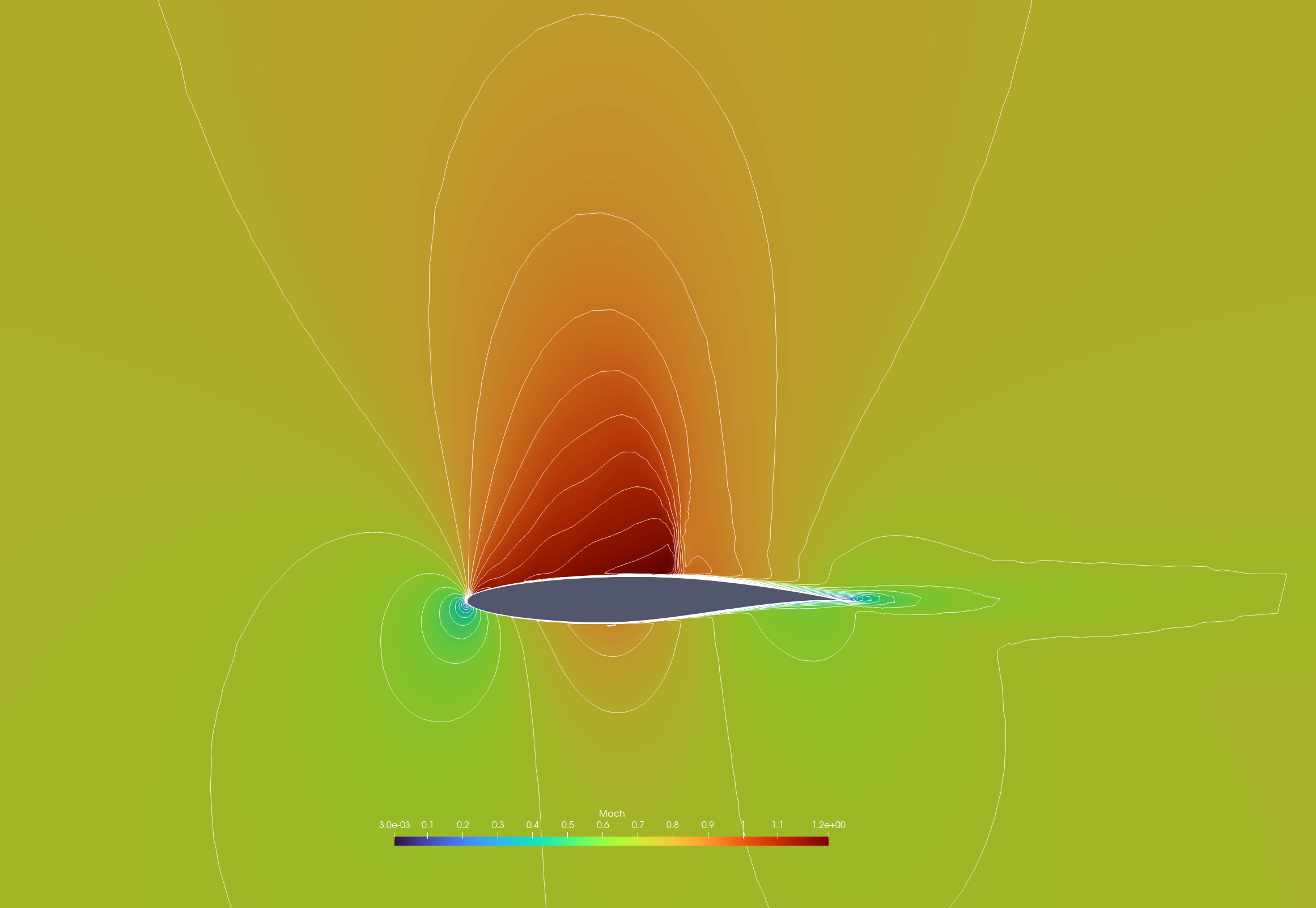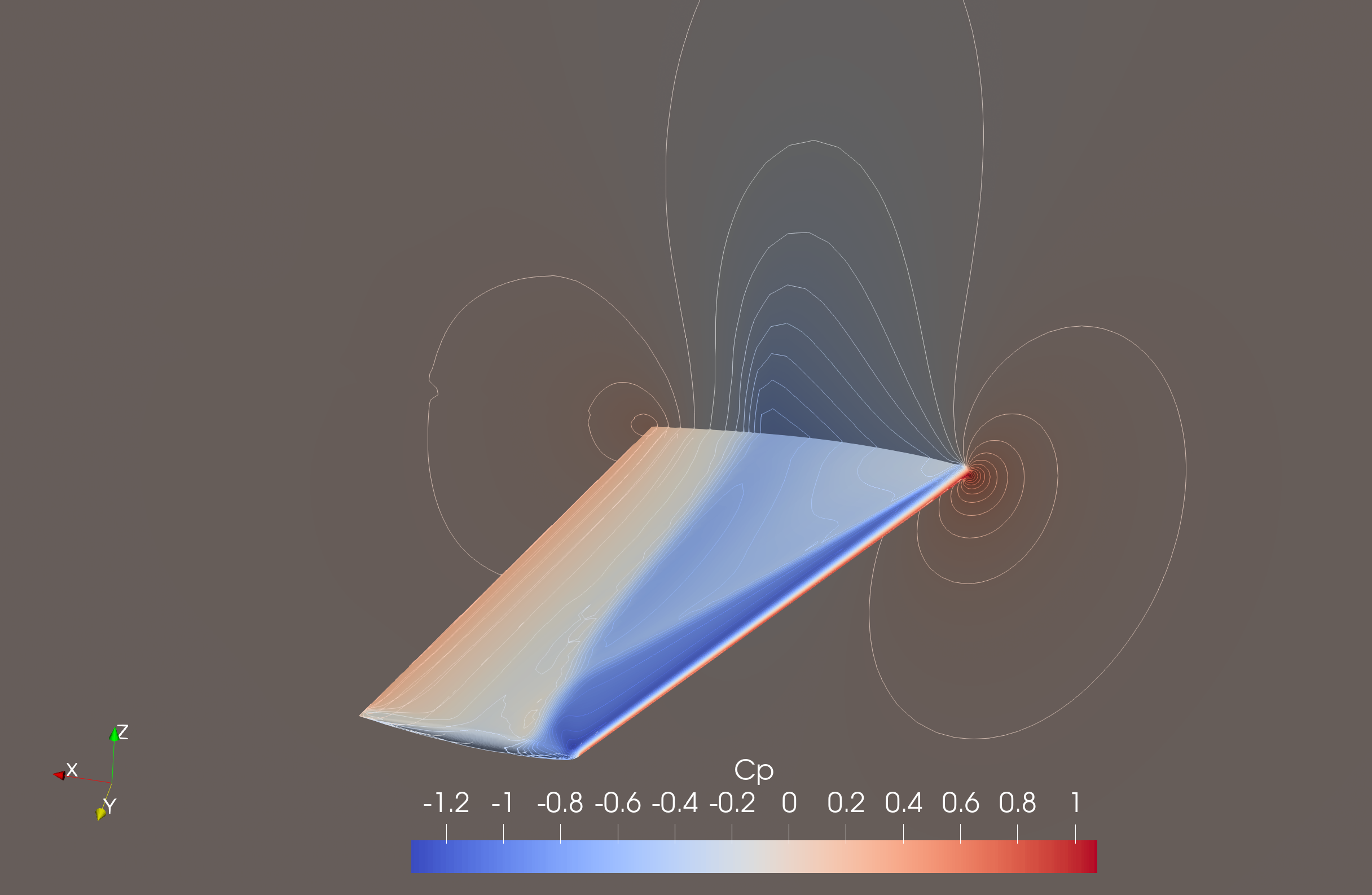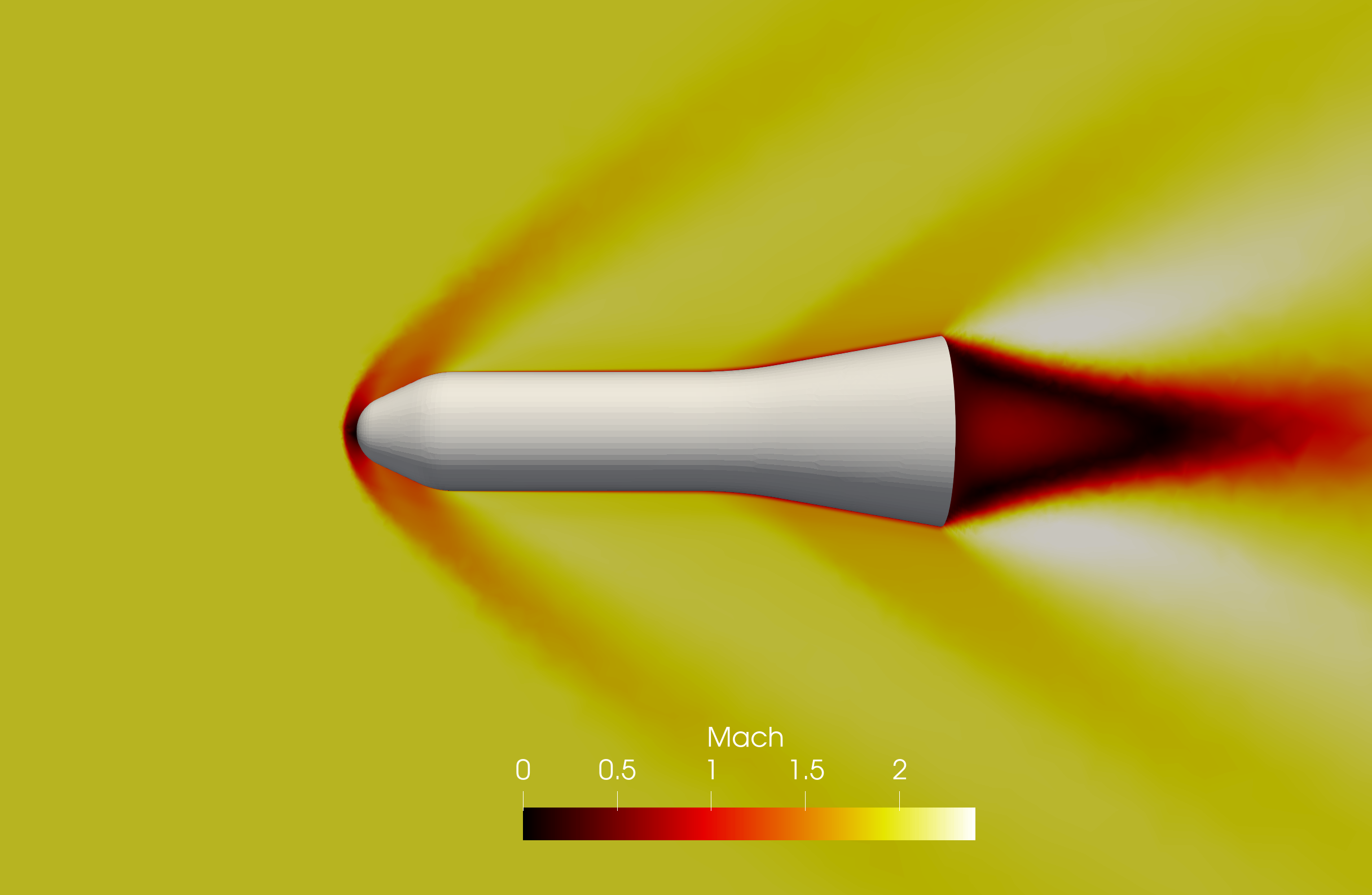Examples
Three-dimensional explosion problem
This example is an extension of the shock-tube problem to a three-dimensional sphere. The details of the flow configuration can be found in this paper. The procedures to obtain an unsteady solution are presented as follows:
Convert mesh:
user@Computer ~/pyBaram$ pybaram import explosion.cgns explosion.pbrm
Partitioning mesh:
user@Computer ~/pyBaram$ pybaram partition 4 explosion.pbrm explosion_p4.pbrm
Running parallel simulation:
user@Computer ~/pyBaram$ mpirun -n 4 pybaram run explosion_p4.pbrm explosion.ini
Convert VTK output file for visualization:
user@Computer ~/pyBaram$ pybaram export explosion_p4.pbrm out-0.25.pbrs out.vtu
Visualizing the solution with Paraview, you can obtain following result.

Density contour of explosion problem
Transonic flow over RAE2822 airfoil
One of the famous benchmarks involves solving transonic flow over an airfoil. Detailed flow conditions can be obtained from the NPARC validation page. The mesh file is obtained from the SU2 tutorial page. The procedures to obtain a steady-state solution are presented as follows:
Convert mesh:
user@Computer ~/pyBaram$ pybaram import rae2822.cgns rae2822.pbrm
Running simulations:
user@Computer ~/pyBaram$ pybaram run rae2822.pbrm rae2822.ini
Convert VTK output file for visualization:
user@Computer ~/pyBaram$ pybaram export rae2822.pbrm out-10000.pbrs out.vtu
Visualizing the solution with Paraview, you can obtain following result.

Mach contour of flow over RAE2822 airfoil
Transonic flow over ONERA M6 wing
This is a well-known benchmark for solving transonic flow over a three-dimensional wing. Detailed flow conditions can be obtained from the NASA Turbulence Modeling Resource. The mesh file is generated using the provided code from the same webpage, allowing for the creation of a series of mixed meshes. You can download medium and fine mesh files from the link provided in the examples folder. Due to the substantial size of the provided mesh files, it is recommended to run this case on a cluster machine. The procedures to obtain a steady-state solution are presented as follows:
Convert mesh:
user@Computer ~/pyBaram$ pybaram import wing_mixed_ph.3.cgns wing_mixed_ph.3.pbrm
Partitioning mesh:
user@Computer ~/pyBaram$ pybaram partition 16 wing_mixed_ph.3.pbrm wing_mixed_ph.3_p16.pbrm
Running parallel simulation:
user@Computer ~/pyBaram$ mpirun -n 16 pybaram run wing_mixed_ph.3_p16.pbrm oneram6.ini
Convert VTK output file for visualization:
user@Computer ~/pyBaram$ pybaram export wing_mixed_ph.3_p16.pbrm out-20000.pbrs out.vtu
Visualizing the solution with Paraview, you can obtain following result.

Pressure contour of ONERA M6 wing surface
Supersonic flow over HB-2 model
The HB-2 model is a standard test case for an axisymmetric body. Detailed flow conditions and experimental data can be obtained from the AEDC technical report. You can download the mesh file from the link provided in the examples folder. Due to the substantial size of the provided mesh file, it is recommended to run this case on a cluster machine. The procedures to obtain a steady-state solution are presented as follows:
Convert mesh:
user@Computer ~/pyBaram$ pybaram import hb2.cgns hb2.pbrm
Partitioning mesh:
user@Computer ~/pyBaram$ pybaram partition 16 hb2.pbrm hb2_p16.pbrm
Running parallel simulation:
user@Computer ~/pyBaram$ mpirun -n 16 pybaram run hb2_p16.pbrm hb2.ini
Convert VTK output file for visualization:
user@Computer ~/pyBaram$ pybaram export hb2_p16.pbrm out-5000.pbrs out.vtu
Visualizing the solution with Paraview, you can obtain following result.

Mach contour around HB-2 model at  .
.